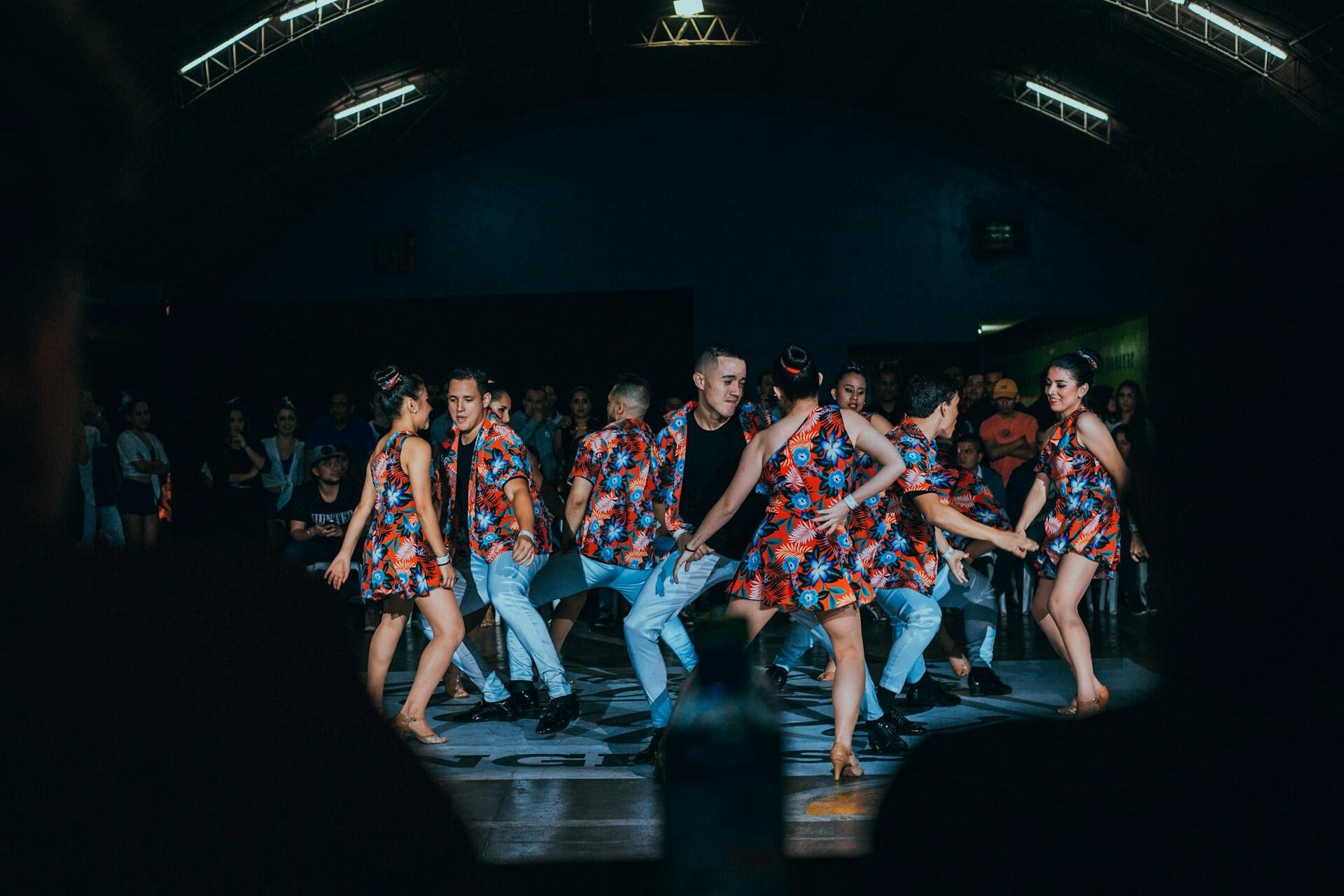Salsa dance is a high-energy, rhythm-driven style of Latin dance. It originated in the Caribbean before evolving into various styles around the world. It's famous for dynamic footwork, expressive movement, and lively music. Here, we'll look at the origins of this style, what it's suitable for, and how you can get started with salsa.

The Origins of Salsa Dancing
La salsa es, y siempre ha sido, la música cubana.
Johnny Pacheco, co-founder of Fania Records
Salsa dancing resulted from a cultural blend in the mid-20th century. It originated in Cuba, where Afro-Cuban rhythms and dances like Son, Mambo, and Cha Cha Cha were flourishing.
Though salsa originated as a high-energy dance style from Cuba (the above quote means "Salsa is, and always has been, Cuban music."), it took on a life of its own in New York City in the 1970s. After all, the city was (and still is) a melting pot of Latin American immigrants, particularly Puerto Ricans and Cubans, who came with their own musical styles and dances.
Musicians experimented and fused different sounds, and salsa music emerged from this fusion. This fiery, percussion-heavy genre naturally needed a style of dancing that matched its sound.
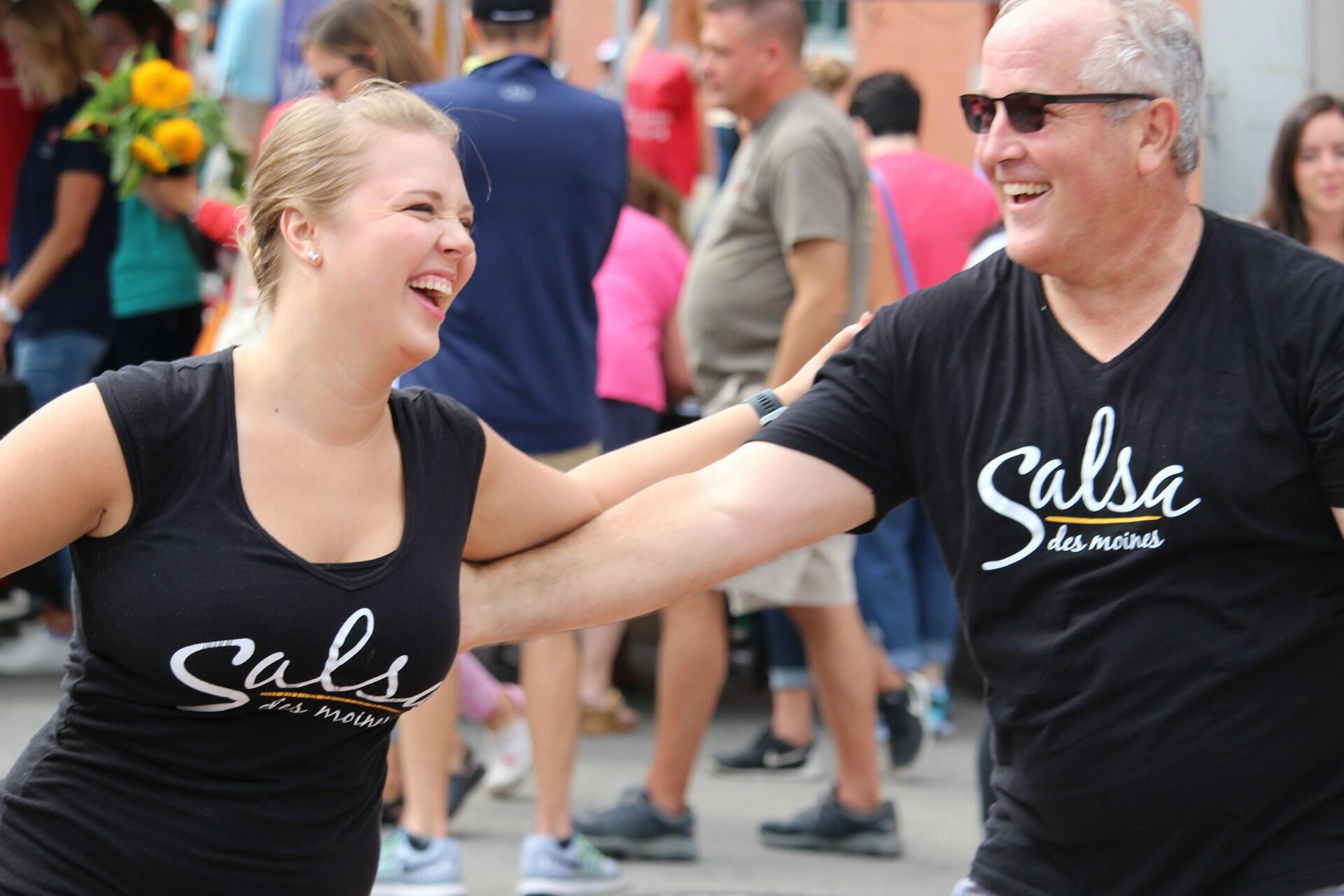
Despite salsa dancing evolving in the United States of America, it never lost its Latin roots. After all, the name "salsa" literally means "sauce" in Spanish and reflects the spicy mix of influences defining the music and the dancing.
Popular Salsa Styles Around the World
Salsa started out as a blend and continues evolving, with different localities adding their flavours to the sauce. This is one of the most exciting things about salsa, so whether you're a beginner or looking to refine your styling, knowing about these differences can help you find a version that's right for you.
Cuban Style (Casino)
This version of salsa dancing emphasises circular motion. Partners move around one another rather than along a straight line. This incorporates Afro-Cuban influences and improvisation and is playful, grounded, and full of spontaneous moves.
Colombian (Cali) Style
This style features lightning-fast footwork with small, tight steps. It is great for crowded clubs, as dancers stay very close together while executing rapid kicks and syncopated steps to high-speed music.
New York Style (On2)
This is a smooth, sophisticated style that, as the name suggests, is danced on the second beat of the music. It is closely related to Mambo and jazz and focuses on timing, grace, and solo "shines," where the dancers break apart to show off individual flair with elements related to Swing and Tap dancing.
Los Angeles Style (On1)
The LA Style of salsa is a show-stopping dance. It is danced on the first beat. It is a linear style with dramatic dips, tricks, and techniques that draw upon ballroom and even Hollywood performances.
Rueda de Casino
This Cuban-born group dance is performed in a circle. A leader calls out moves, and dancers switch partners in a fun, fast-paced rhythm.
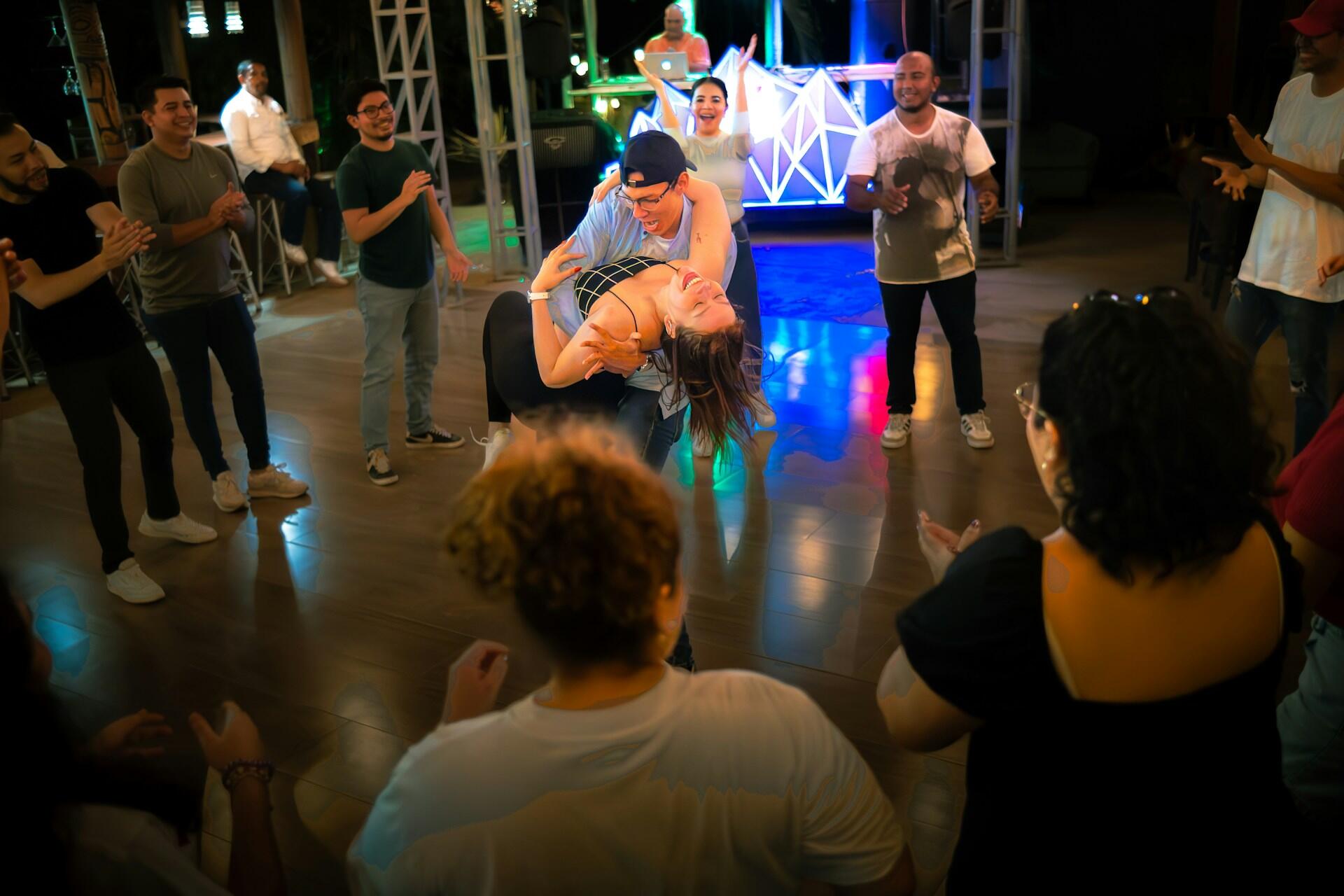
Miami Style
This style combines Cuban and other North American Styles with a compact structure, including sharp turns and diagonal movements. It's often performed in clubs and reflects South Florida's cultural fusion.
Afro-Latino Influences
Salsa has deep African roots; the styles seen in Haiti, the Caribbean, and West Africa reflect this. These forms use polyrhythms and expressive body movement, with dances inspired by ancestral dances and other dance traditions.
Cuban (Casino): Fun, spontaneous, and circular, great for improvisers.
LA Style: Showy, dramatic, and perfect for performers.
NY Style: Sleek and musical, ideal for dancers with jazz or mambo interests.
Colombian Style: Speed and footwork lovers, step right in.
Rueda: Outgoing? This group-based, partner-switching style is for you.
Why Salsa Dancing Is the Ultimate Social Activity
With so many styles, you should probably already think there's a suitable style for you, but salsa isn't just about the individual. It's an incredibly social affair.
Salsa dancing is about the connection between partners within a community and everybody's broader rhythm and expression.
On the dance floor at a local class, a weekend club night, or a Latin dance festival, salsa brings people together in ways that other activities can only dream of.
Unlike ballroom dancing, which typically involves a fixed partner, salsa is a famously inclusive type of dance. In most classes, partners rotate every few minutes so that everybody can learn from one another while building confidence and a sense of community.
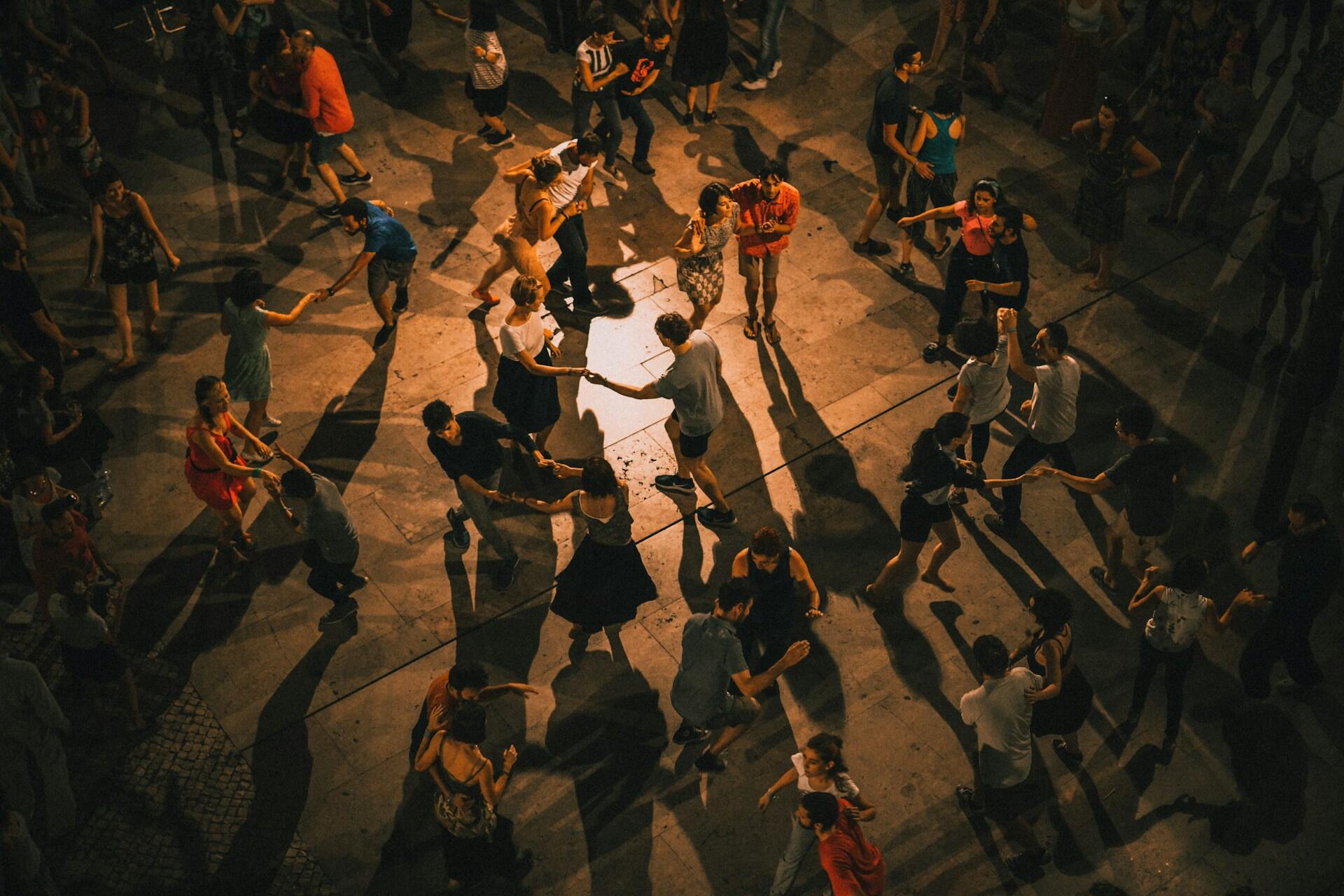
Salsa takes place in dynamic environments where social barriers melt away, turning strangers into dance partners in seconds, a lot like Rock 'n' Roll dancing just with different music.
Then, there's the social nature of salsa in the broader sense. Beyond the dancing itself, salsa comes with weekly events, club nights, and open-air Latin dance parties.
Dancers of all levels can come together to practice, perform, and enjoy salsa music and dancing. These events are great for beginners since they're low-pressure environments where you can join the salsa scene and make new friends.
There's also something for experienced dancers. They can explore different styles, share styling tips, and even improvise.
The unspoken communication in salsa is like a language of its own. Whether it's a simple hand gesture, a shift in weight, or a look that becomes a spin, a turn, or a pause, each dance is a brief and exciting conversation, and salsa is the language. However, if you like the idea of expressive dance, consider looking into Contemporary dance classes.

Salsa as a Workout: Fitness Benefits
The first reason to consider salsa is that it's fun, but also great for your health. After all, with every class feeling more like a party than exercise, you don't even realise you're working out half the time. While you dance, you'll break a sweat, tone muscles, improve your stamina, and have fun.
Salsa dancing isn't just for fun, it's a powerful full-body workout. With non-stop movement, core engagement, and cardio intensity, a one-hour salsa class can torch hundreds of calories, tone your muscles, and lift your mood. The best part? It rarely feels like exercise at all.
With music ranging from 150 to 250 beats per minute, salsa dancing will raise your heart rate. This makes it a great cardio exercise that will improve your circulation, lung capacity, and overall endurance. That said, even slower dance styles like Ballroom dancing are good for you.
| Workout Type | Calories Burned per Hour | Focus Area | Social Aspect |
|---|---|---|---|
| Salsa Dancing | 400–600 | Full body | High |
| Zumba | 500–800 | Cardio / Core | Moderate |
| Ballet | 300–500 | Flexibility / Strength | Low |
| Hip-Hop | 400–600 | Legs / Cardio | Moderate |
As you improve at salsa dancing, you'll improve your balance, coordination, and agility. With rapid steps, hip movements, and spins, salsa works your whole body.
The health benefits extend to your brain, too. Salsa can improve your concentration, reactions, and memory, and like other types of exercise, it'll also improve your mood.
Learn Salsa Dancing: Where to Start
You may feel excited or even nervous about starting salsa. Like every dance, it begins by taking the first step.
Want to learn the basic steps, watch this video.
Beginner Classes
The best way to learn about salsa is by joining a beginner-level class at a local dance studio.
Learn about the foundational steps, rhythm, and basic partner work. These classes will likely be clearly labelled, but you can always ask if they're suitable for complete beginners.
Online Learning
Online classes come with the flexibility of learning in your own home. Many instructors and tutors offer virtual courses or live-streamed classes that you can follow at home.
Private Lessons
Private salsa lessons mean that every minute of the class can be spent focusing on you and how you can improve. With tailored sessions, these are great for quickly improving technique, preparing for events, or building your confidence before you take your moves to other salsa events.
Dance Workshops and Intensives
These are a great way to improve your skills quickly. Sign up for a weekend workshop or multi-day salsa intensive course. Sometimes, they may even cover multiple styles and include bachata or cha cha add-ons.
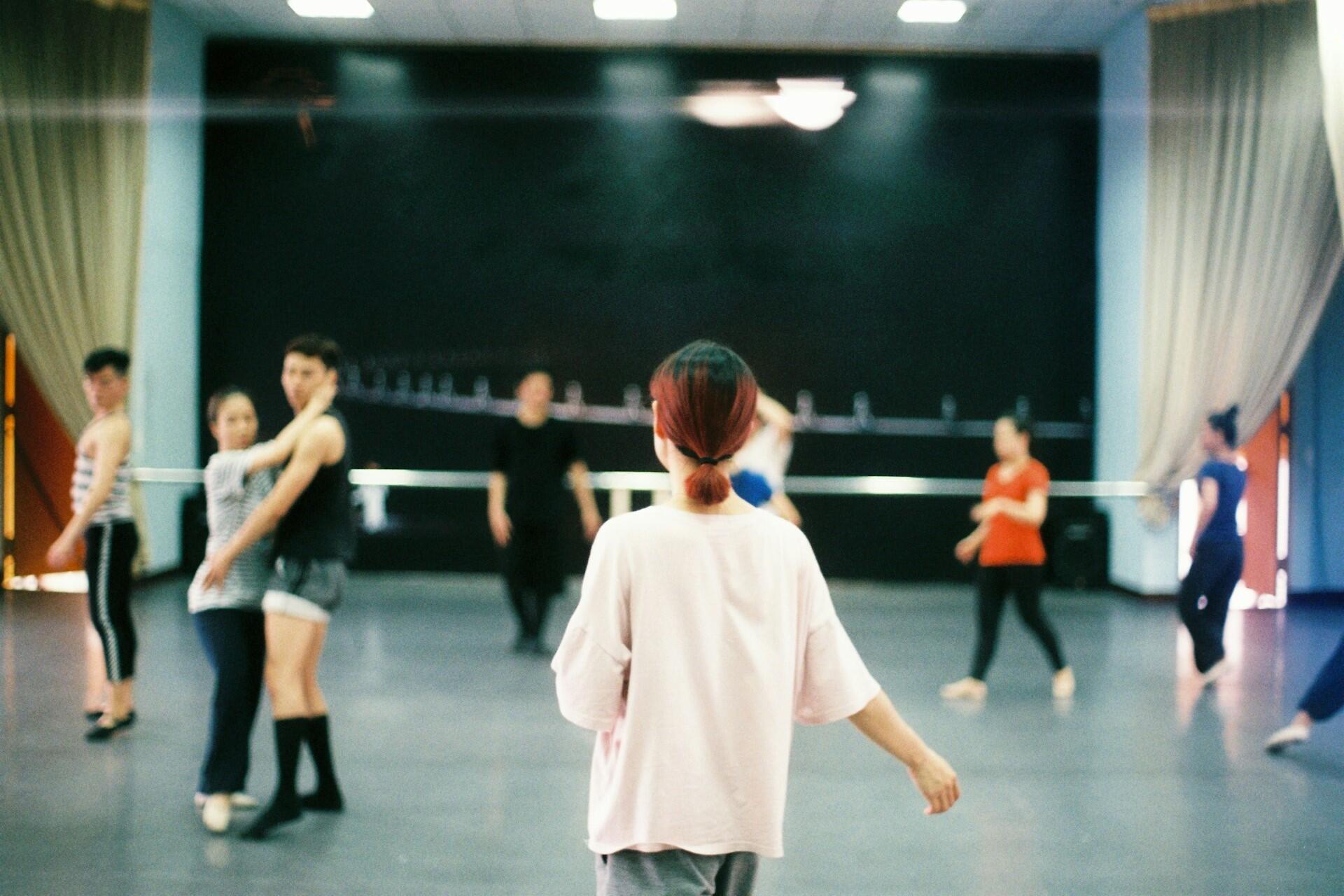
If you can't find any local ones, just consider signing up to whatever workshops are available to get you started, in bigger cities, you might find that Urban Dance workshops are more popular.
Practicing the Moves at Home
Don't rest outside of class. Use your time at home to practice your dance moves. You can easily practice your skills in your living room or any space with a mirror and the right mindset.
Start with the Basics
Spaced repetition is the best way to learn anything. For salsa, start with fundamental steps like front-to-back, side-to-side, and the Cumbia basic. These core movements are the building blocks of most salsa dancing, and you can practice them while focusing on your timing, posture, and clean footwork.
Use a Mirror
It'll probably feel a little awkward at first, but it's essential you can see yourself dancing so that you can correct your posture, align movements, and master styling. If you can't get a mirror, film yourself.
What to Wear to a Salsa Class
What you wear when you attend a salsa class can make all the difference. Salsa is a high-energy style and includes spins, dips, and quick footwork, so you must wear something comfortable and be able to move around.
What Women Should Wear to Salsa Classes
Tops
- Fitted tank tops, halters, or strappy tops
- Avoid loose or strapless tops that might shift during movement
Bottoms
- Skirts or dresses above the knee (for freedom of movement)
- Leggings or fitted dance pants
- Avoid long, flowing skirts that can get tangled
Shoes
- Latin dance shoes with a low or mid-heel
- Suede soles for smooth spins
- Secure ankle straps for support
- Beginners can wear dance flats or low kitten heels
Accessories
- Avoid dangling jewellery (especially rings and bracelets)
- Hair tied back to prevent interference during spins
- Optional: sweat towel or light cover-up
What Men Should Wear to Salsa Classes
Tops
- Breathable button-down shirts or fitted T-shirts
- Lightweight, moisture-wicking fabric
Bottoms
- Dress pants, chinos, or flexible trousers
- Avoid tight jeans or restrictive pants
Shoes
- Leather or suede-soled dress shoes or Latin dance shoes
- Avoid sneakers or rubber soles that grip the floor
Accessories
- Bring an extra shirt if you sweat easily
- Optional: handkerchief for wiping sweat
- Keep accessories minimal for safety and comfort
If you'd like to get into dancing or take up salsa lessons, just search for a salsa tutor on the Superprof!

